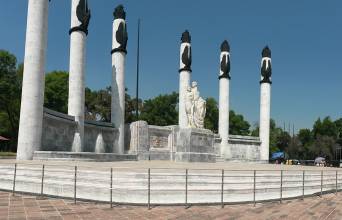Bosque de Chapultepec

Chapultepec Chapultepec, more commonly called the "Bosque de Chapultepec" (Chapultepec Forest) in Mexico City, is one of the largest city parks in the Western Hemisphere, measuring in total just over 686 hectares (1,695 acres). Centered on a rock formation called Chapultepec Hill, one of the park's main functions is an ecological space in Greater Mexico City.
It is considered the first and most important of Mexico City's "lungs", with trees that replenish oxygen to the Valley of Mexico. The park area has been inhabited and considered a landmark since the Pre-Columbian era, when it became a retreat for Aztec rulers.
In the colonial period, Chapultepec Castle was built here, eventually becoming the official residence of Mexican heads of state. It would remain so until 1940, when it was moved to another part of the park called Los Pinos. Bosque de Chapultepec is divided into three sections, with the first section being the oldest and most visited.
This section contains most of the park's attractions including the castle, the Chapultepec Zoo, the Museum of Anthropology, and the Rufino Tamayo Museum, among others. It receives an estimated 15 million visitors per year. This prompted the need for major rehabilitation efforts that began in 2005 and ended in 2010.
The government has authorized the construction of business, offices and big parking lots for cars.
